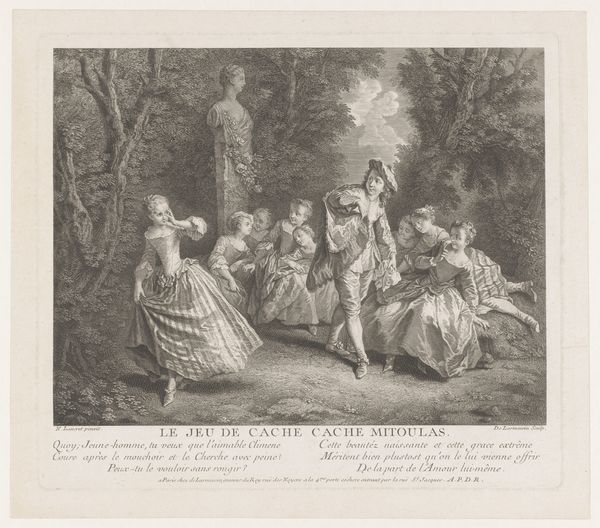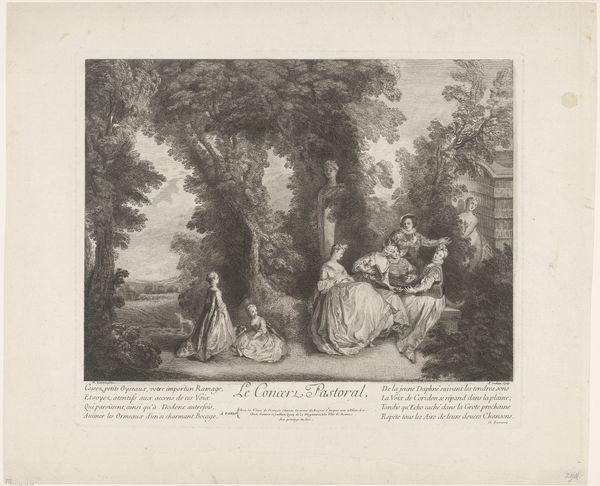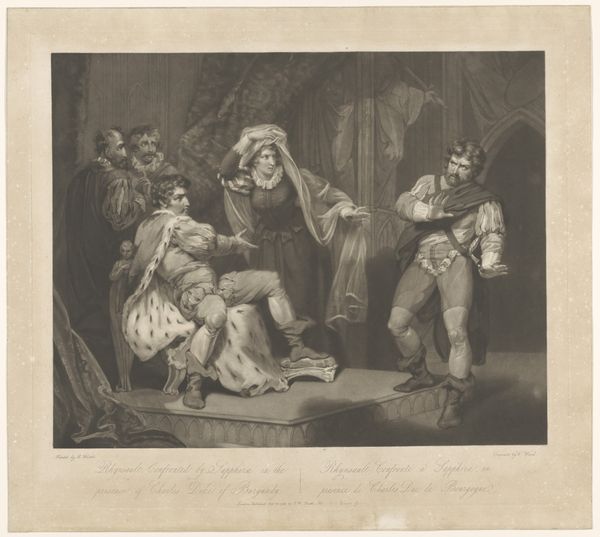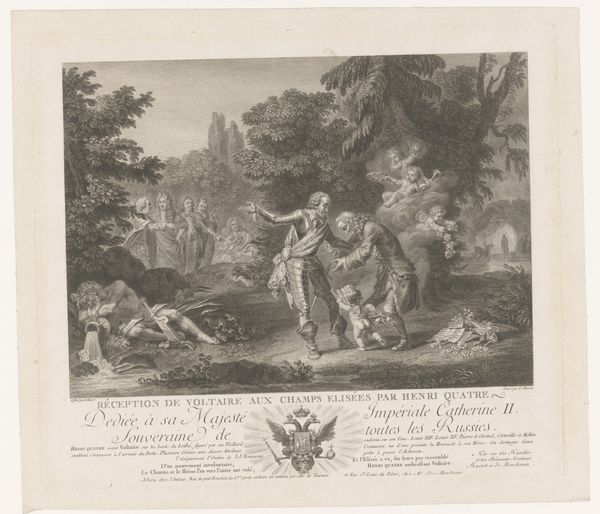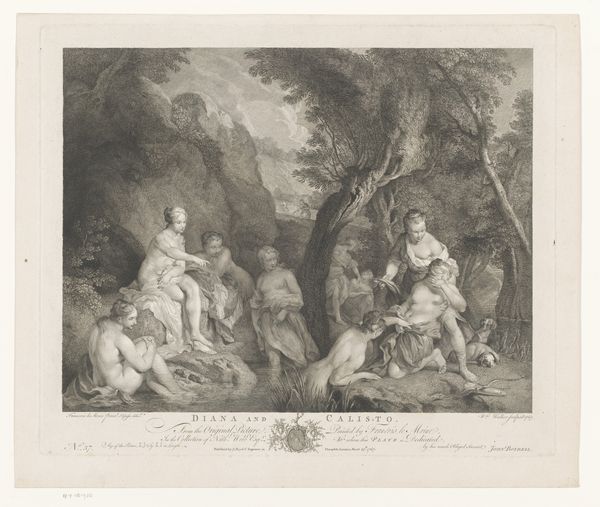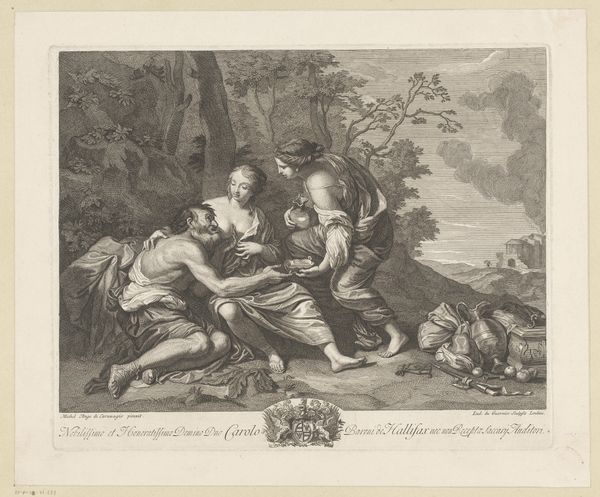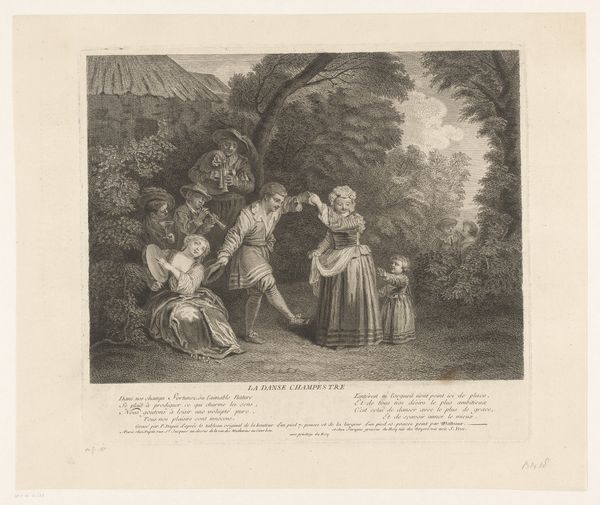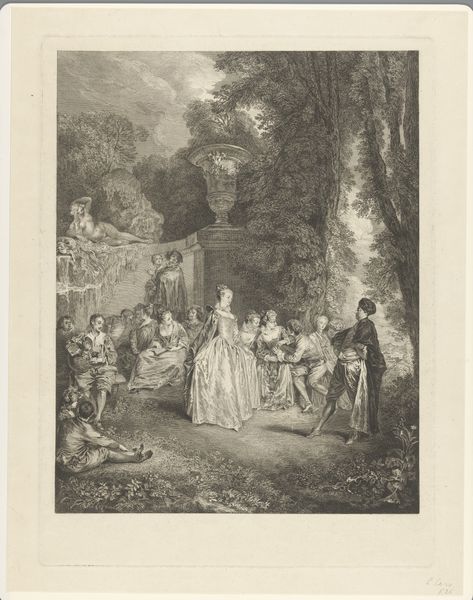
print, paper, engraving
# print
#
landscape
#
figuration
#
paper
#
romanticism
#
19th century
#
genre-painting
#
history-painting
#
engraving
#
watercolor
Dimensions: height 601 mm, width 738 mm
Copyright: Rijks Museum: Open Domain
Alexandre Vincent Sixdeniers created this print of an elegant company playing blind man's bluff in the 1800s using a technique called etching. The appeal of an etching lies in its line work, the way it can capture fine details and textures. The artist would have coated a metal plate with a waxy, acid-resistant substance, and then used a sharp needle to draw the composition, exposing the metal beneath. The plate was then immersed in acid, which bit into the exposed lines, creating grooves. Ink was applied to these grooves, and the surface wiped clean, before the image was transferred to paper under high pressure. The choice of etching speaks volumes about the social context of the artwork. The detailed and precise lines mirror the refinement and order that the upper classes aspired to. This print, with its scene of leisure, is both a celebration of, and a commodity for, that social stratum. The labor involved in the production of the print is subtly present in the final image, a reminder of the skill and effort required to produce such a refined object.
Comments
No comments
Be the first to comment and join the conversation on the ultimate creative platform.
